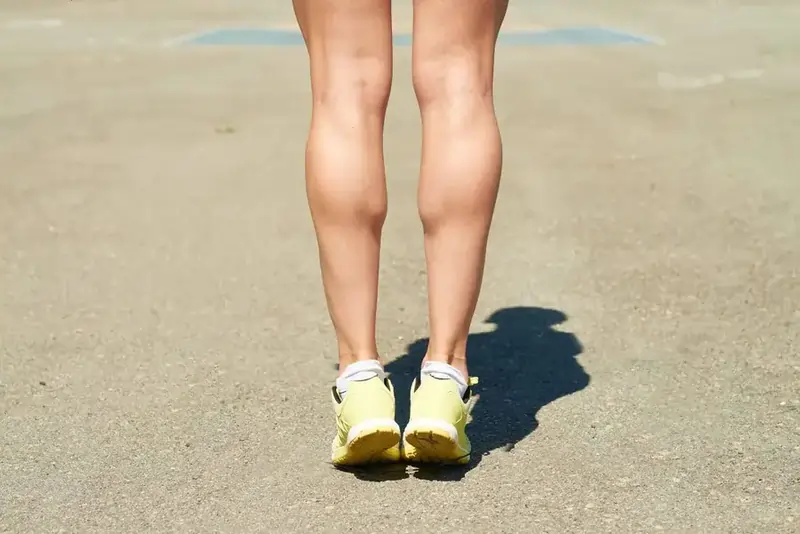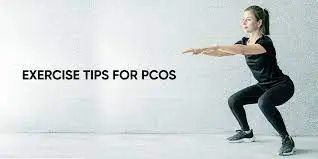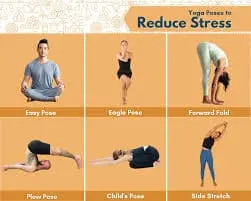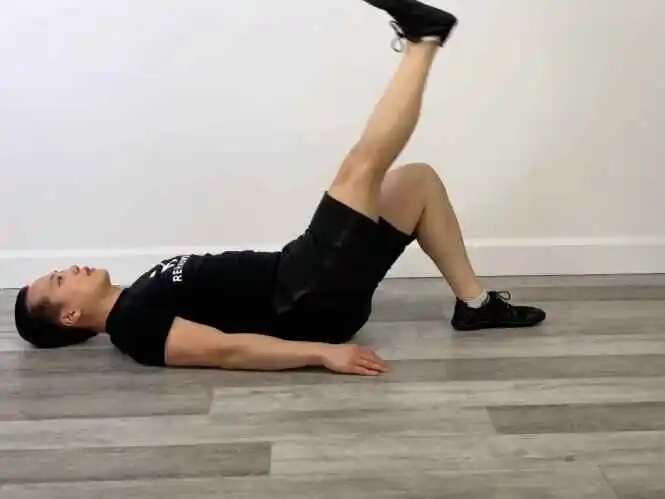Calf Raise Exercise: Muscle Worked, Benefits, How to Do?
What is the Calf Raise Exercise?
- One kind of exercise that helps build typical calves is calf raises.
- This workout tones and strengthens the soleus and gastrocnemius muscles using your body weight.
- While calf muscles are sometimes overlooked during workouts, they are essential for numerous weight-bearing exercises, including running, jumping, and reaching.
- To make all of your activities easier, consider standing calf raises into your lower body routine.
- Before doing this, you need to be aware of the muscles involved. The soleus and gastrocnemius are the two main muscles in your calf.
- However, in addition to its twin function of promoting plantar flexion, the two-headed, superficial gastrocnemius muscle helps with knee flexion.
- While the soleus muscle helps in maintaining balance and raises blood flow from your lower leg back to your heart, the gastrocnemius muscle also contributes to knee flexion through its complementary attachment with the hamstring muscle.
Which Muscles Are Activated During Calf Raises?
- Calves
The gastrocnemius, or rounded muscle at the top of your calf, and the soleus are the two muscle groups used in this exercise. This long, flat muscle runs down your lower leg below the gastrocnemius. Both are essential for proper ankle flexion and bending, balance, and “power” exercises like sprinting, jumping, or lunging.
- Ankles
Stretches for the calves and ankles improve the tendons, ligaments, and muscles in your body. This increases stability, maintains the health of your ankle joints, and guards against sprains and other ailments.
Benefits of Calf Raise:
Increased muscle flexibility improved leg strength and general fitness are two benefits of calf raise exercises. By strengthening the muscles surrounding the ankles and lower legs, calf raises also contribute to healing. Firm calf muscles obtained from calf raises allow improved posture throughout daily tasks and physical activity.
- Better coordination and balance
Raising your calves can help you do significant neurological changes that improve balance and help avoid age-related decreased mobility, especially in older persons. Frequent calf-raise exercise improves balance performance by reducing gastrocnemius and soleus muscle activations during standing.
Exercises such as single-leg calf raises improve ankle joint range of motion and target particular muscles, strengthening the lower body while also significantly improving balance and body control. When practicing calf raises, it is vital to breathe correctly and maintain a slow pace for maximum benefits in developing balance. This will support creating balance and strengthening the center.
- Improved stability of ankles
Stronger calves can have several advantages, such as;
Improving the stability of the ankle.
Lowering the danger of injuries related to the ankle.
Increasing the strength and mobility of the ankle joint while strengthening the surrounding tendons, ligaments, and foot muscles.
Improving the strength and mobility of the foot and ankle.
Calf raises are a useful workout to undertake to build stronger calf muscles.
- Improved performance whilst running
To improve running mechanics, calf muscles are essential since they increase muscular output and explosiveness. During running, particularly during the toe-off phase, powerful calf muscles allow people to move forward and upward. Increased calf strength improves the push-off with each step, which impacts stride length and running rate. Making calf strengthening a priority improves running and sprinting performance, stabilizes and strengthens the ankle, and lowers the chance of injury.
- Preventing as well as Recovering Injury
Strong calf muscles are necessary for daily activities like jogging and walking. Additionally, they lessen the chance of injury during physical activity by supporting and stabilizing the lower body. Weak calf muscles can influence your stability and balance as well as your ability to perform daily duties. Additionally, it might increase the risk of ankle and lower leg injuries. inversely, ankle sprains and other related conditions can be avoided with greater calf strength.
- Burning calories and losing weight
Calf increases the need to use energy, which is used to burn calories. Calf raises are a useful complement to a calorie-burning exercise regimen, even though they don’t burn as many calories as some high-intensity workouts. When combined with a healthy diet and comprehensive exercise program, calf raises can help achieve weight loss objectives.
Lifting your legs to strengthen your muscles and exercising your lower body will help you burn more calories and have a faster metabolism over time. The overall number of calories burnt during calf raises may increase the overall use of energy when paired with other full-body activities.
Calf raise exercise:
Calf raises can be done on the floor while standing if you don’t have a mat. You might even attempt to use a wall.
- Position your feet shoulder-width apart and tip your toes forward while standing on a yoga or exercise mat.
- Keep your shoulders down, your back straight, and your abdominal muscles tight.
- While maintaining your stretched (but not locked) knees, gradually raise your heels.
- Pause for a moment, keeping your feet as firmly planted as you can.
- Hold this position for a few seconds.
- To get back to where you started, drop your heels to the ground.
- Then relax.

Additional Calf Raise Exercise Variations:
There are several ways to perform this workout depending on your fitness level and objectives.
Seated Calf Raise
When doing calf raises while seated, just the soleus muscle which is located below the gastrocnemius is engaged. This variation of the method is perfect for those who have trouble maintaining their balance when standing.
- When performing this exercise while seated in a chair, your shoulders and back should be straight.
- Maintaining a straight foot touch on the ground and a tight core.
- Your heels must be lifted off the ground and you must press down with the toes of your foot
- One heel at a time or both heels raised are other options.
- Hold this position for a few seconds.
- Then return to your neutral position.
- Then relax.
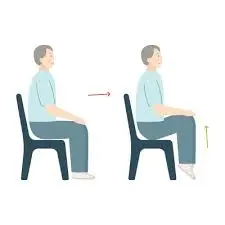
Assisted Standing Calf Raise
If maintaining balance during a standing calf raise becomes difficult, you can alternate this exercise by grabbing chair support for stability.
- You must perform this exercise while standing on the floor with both feet pointed forward and shoulder-width apart.
- Put your best effort to tighten your abdomen, lower your shoulders, and arch your back.
- You must lift both of your heels toward the ceiling while holding onto a chair with your hands.
- Both of your knees should be straight but not twisted.
- After a short while of holding, make an effort to stand as tall as you can on your toes.
- After that, bring your heels down to the ground and take a step back to begin.
- Then relax.
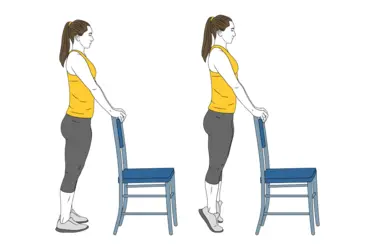
Standing Calf Raise on a Step
By performing this exercise on steps or stairs, you can improve the range of motion in your calves.
- You must perform this exercise by placing the base of your feet on the steps or stairs and pushing your heels as high as you can.
- Hold this position for a few seconds.
- Then lowering them gradually until they are just below the top of the steps or stairs.
- Return to your starting posture once your calf muscles have a comfortable degree of stretch.
- Then relax.

Think about the following suggestions for making sure safe exercise:
- Ensure your body has enough time to warm up before working out.
- You should progressively increase the duration and number of repetitions in your workouts to prevent overtraining and sore muscles.
- Always utilize the right form when working out to protect your body and achieve the desired results.
- If at all possible, avoid wearing anything that will restrict your range of motion while exercising. Instead, dress comfortably loose.
- When exercising, keep your back straight.
- It’s advised that you inhale deeply and exhale slowly from your lips before exercising.
A common mistake to avoid:
- Not expanding in advance
Among all the calf exercises, stretching is the most important since it keeps the muscles flexible and helps to avoid complaints associated with exercise. Before performing a calf raise, stretch your calf muscle for five to ten minutes to prevent these problems.
- Not Being Able To Complete A Contraction
You must experience enough contraction for a muscle to be completely stimulated. This will be done by fully extending the muscle and adding an adverse stretch. By using this technique and taking your time throughout each repetition, you may give your calf muscle enough time under tension, which will eventually lead to muscular growth.
- Moving Too Quickly
Regulate the workout’s speed to get the greatest advantages from standing calf raises. For beginners, moving too quickly won’t provide as much benefit. For better strength and performance, it is best to elevate and lower your heels gradually. To get the greatest benefits from this exercise, you should perform calf raises with greater power and force if you have mastered the technique.
- Leaning Forward
Standing tall is necessary to keep your chest elevated and to maintain your balance when performing these exercises. Exercising with a forward leaned posture might worsen pain in the back and reduce its advantages. Thus, you have to stand straight to prevent this.
Summary:
One of the best exercises you can do to increase your general health and fitness level is the calf raise. They are simple to perform, don’t call for any specialized equipment, and have several advantages, such as better posture, injury prevention, and increased strength and flexibility. Strong calves are beneficial in and of themselves. You’ll have greater self-control, be able to complete more, and feel better about yourself.
FAQs
What advantages can calf raises provide?”
Calf raises strengthen your foot and ankle muscles, ligaments, and tendons. This increases stability, maintains the health of your ankle joints, and guards against sprains and other ailments.
Should you perform calf raises every day?
Yes, performing calf raises every day is typically safe and will provide results with regular practice. For possible benefits, try adding calf lifts to your regular exercise.
Will the size of the calf increase with calf raise exercise?
Compared to the seated form, the standing variation showed noticeably larger improvements in muscle size. Standing calf raises were found to be far more successful than sitting calf raises in promoting muscular hypertrophy, particularly in the gastrocnemius muscle.
How many calf workouts are done each day?
Pick two or three calf workouts to incorporate into their weekly routine. Try for at least 6–12 repetitions for 4–5 sets twice a week to promote muscle growth. To keep improving, change the exercises, rep ranges, and sets as necessary.
Does walking work the calves?
Your calves will get stronger with exercises like walking, hiking, and jogging, especially if you do them uphill. Your calves will have to use more energy on a higher rising. Running sports, including basketball, tennis, and soccer, require you to sprint, jump, and apply force to your calves to rapidly change direction or fast.
Do calf raises make legs thinner?
Although they won’t help you reduce fat in that area, calves-specific strengthening exercises can help define and tone your calf muscles. Stand up straight and place your hands on a wall or the back of a chair for stability when performing a basic calf raise. Refrain from locking your knees.
Is it safe to raise calves?
The calf’s anatomy, which consists of the gastrocnemius and soleus muscles, determines the lower leg’s strength and mobility. Calf raises are a simple exercise that can help people of all fitness levels avoid injuries, improve posture, and run more effectively.
Do calf raises improve strength?
You may define and shape your calves for a more toned and sculpted appearance by doing calf raises daily, which help muscular growth in these areas. The ligaments, tendons, and muscles that surround the ankle joint are also strengthened by ankle raises.
Do calf raises help you gain muscle?
Standing calf raises are one of the best techniques to grow your calves. The gastrocnemius, the biggest muscle in the calf, is highlighted in this exercise. You can use weights for it or not. Step into an upright position with your feet shoulder-width apart.
Why do you need strong calves?
When you stand, the calf muscle provides stability and allows you to move your foot and lower leg. Whether you walk or run, it pulls you onward. In addition, you can “lock” your knee, bend your foot, jump, and spin your ankle.
What does the calf muscle do primarily?
The plantarflexion of the foot and ankle is controlled by the calf muscles. Activities like running and jumping use the calf muscles.
References:
- Physician, N. P. (2022a, 9 January). Exercise for calf raises: Muscle exercise, health benefits, how to perform? – Mobile. A mobile clinic for physical therapy. Exercise your muscles and improve your health with this calf raise exercise (https://mobilephysiotherapyclinic.in/).
- Power, A. (2024, 26 March). Arsenal Strength: 7 Advantages of Calf Raises. advantages of calf raising https://blog.myarsenalstrength.com
- Rise of the Calf. (n.d.). [Visual]. Calf-raises: Hingehealth. https://www.hingehealth.com/resources/articles
- September 30, 2020, Myprotein. How To & Frequently Made Errors in the Standing Calf Raise Exercise The calf-raise exercise: a guide to typical mistakes. – MYPROTEINTM. MYPROTEINTM. https://www.myprotein.co.in/blog/training/

